Phung Dinh Giap in Dong Khe village, Bac Ninh province, has been making clay statues for over 60 years to conserve the beauty of Vietnamese folk culture.
Phung Dinh Giap, 67, is the only artisan in Dong Khe village, Song Ho commune, Thuan Thanh district, who still makes clay statues, a Vietnamese folk toy played with during the Mid-Autumn Festival and used in worship rituals.
In the old days, a set of clay statues, a star-shaped lantern and a paper doctor were indispensable items on the fruit tray of the Mid-Autumn Festival.
A traditional set of statues comprises five images, the Buddha, an old man, a child, a turtle and a bird, each of which has a meaning. The Buddha symbolizes morality and conscience while the old man and child imply the succession of generations. The bird represents the aspiration for freedom and peace, and the turtle is a symbol of immortality and strength.
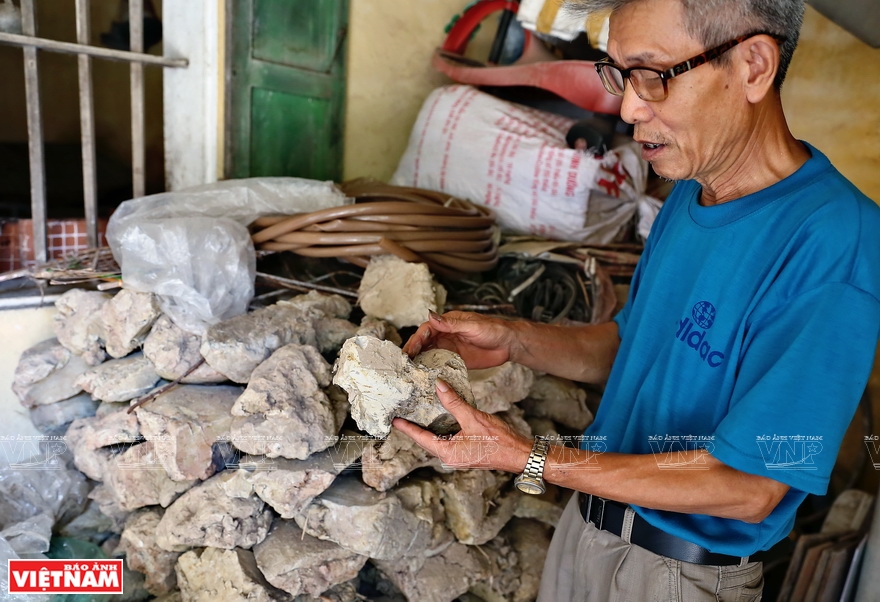
The clay must be dug at a depth of 2.5 meters to have the required smoothness and cleanliness. Photo: Khanh Long
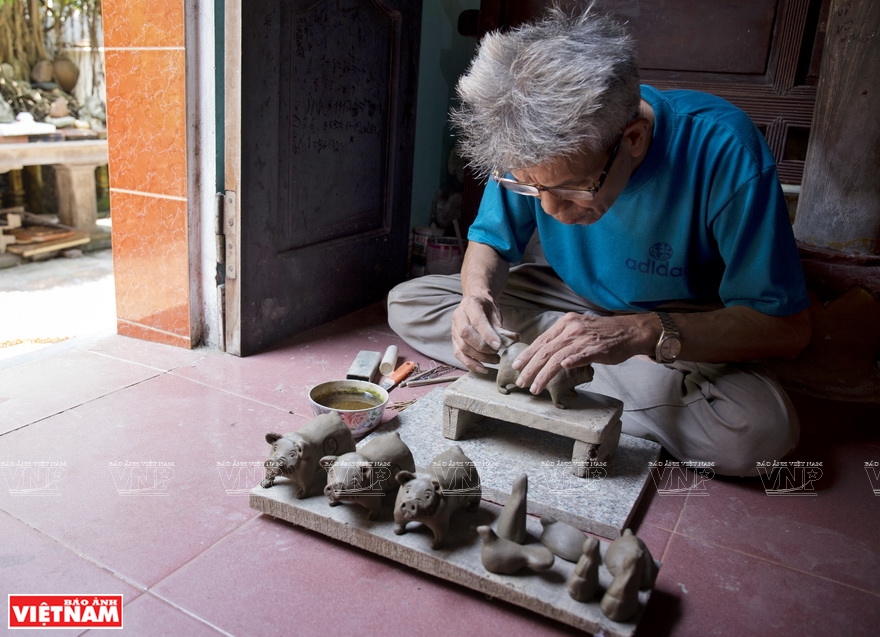
Shaping the statue is done by hand. Photo: Khanh Long
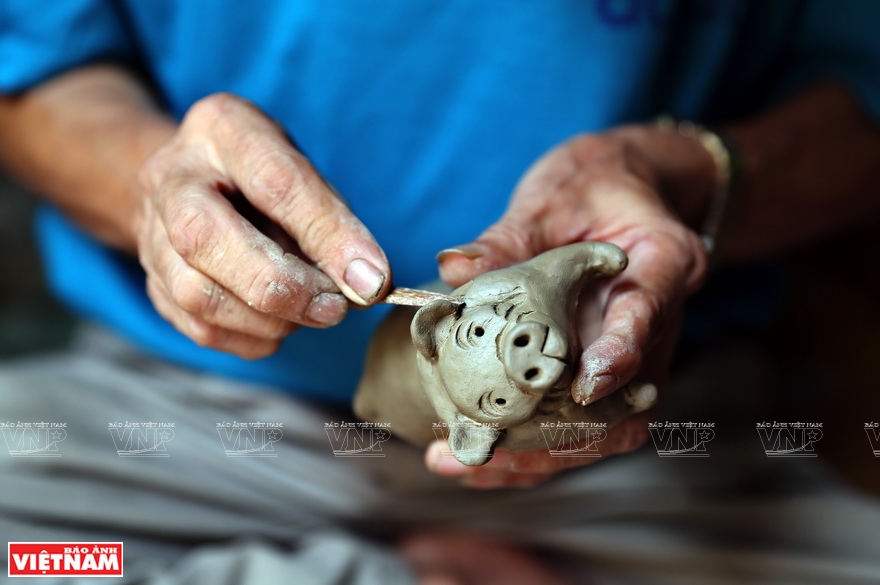
A sharp end bamboo stick is used to shape the details of the statue. Photo: Cong Dat
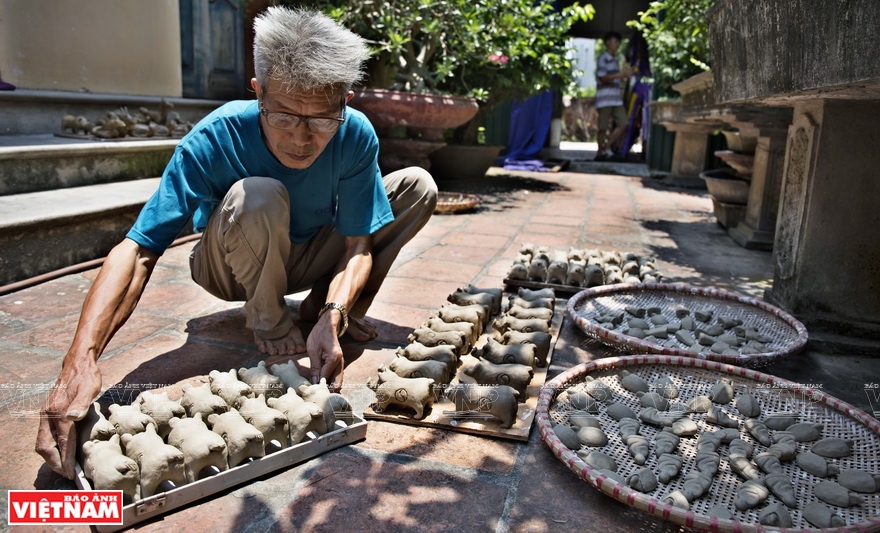
After shaping, the statues are sundried for at least six days. Photo: Khanh Long
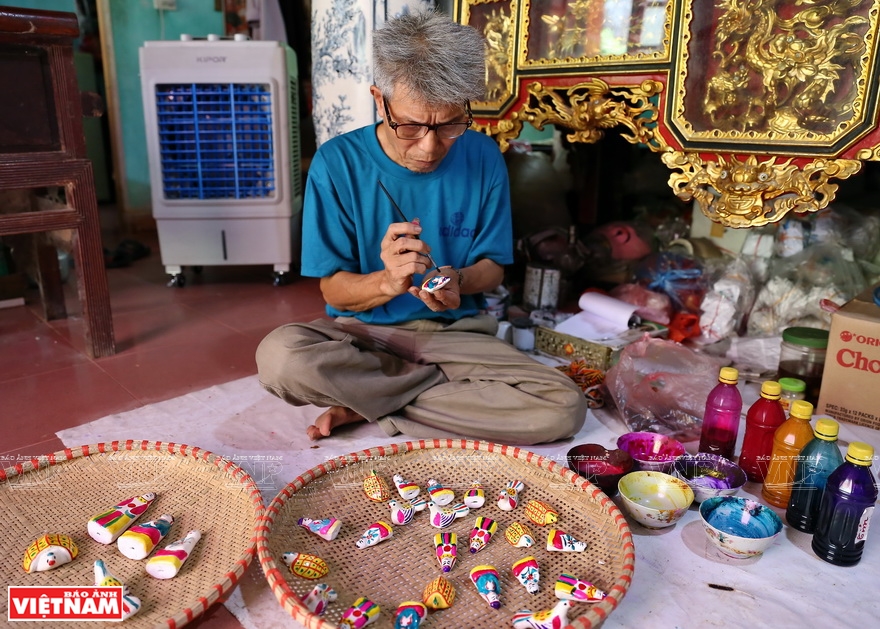
The basic colors of the clay statues are white, yellow, blue, red and black. Photo: Cong Dat

A set of traditional clay statues. Photo: Khanh Long |
According to Giap, the process of making clay figurines requires a lot of steps. The main materials are clay and crepe paper, which is made from tree bark. The clay must be dug at a depth of 2.5 meters to have the required smoothness and cleanliness. The clay is dried, ground into powder and sieved to become smooth and cool. The crepe paper is soaked in water for seven days until it becomes soggy. After that, the clay powder is pounded and kneaded with the paper powder into a soft mixture to be used to shape the statues.
After shaping, the statues are sundried and painted with a mixture of scallop shell powder, sticky rice paste and water. The painted statues are sundried again and then colored mainly with white, black, yellow, blue and red. Although the clay statues are not fired, they are firm and durable.
Clay statues have now lost their popularity, but Phung Dinh Giap is keen on keeping the old craft alive.
“Making clay statues is our family’s craft passed down from one generation to another. I don’t know when the craft was born, but for sure, I will never make it die,” Giap said. “My whole family, including me, my wife and my son, are making and will continue to make clay statues. Given the present loss of popularity of folk toys, we even have to work harder to preserve and revive the craft.”
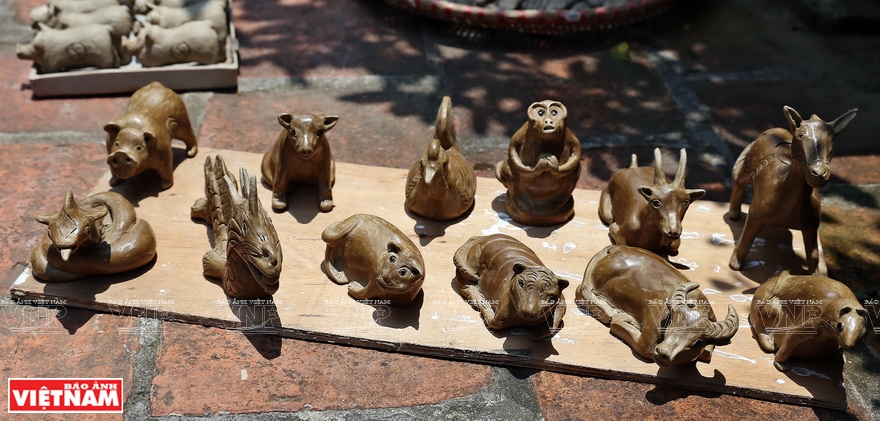
A set of clay statues featuring 12 zodiac animals. Photo: Khanh Long
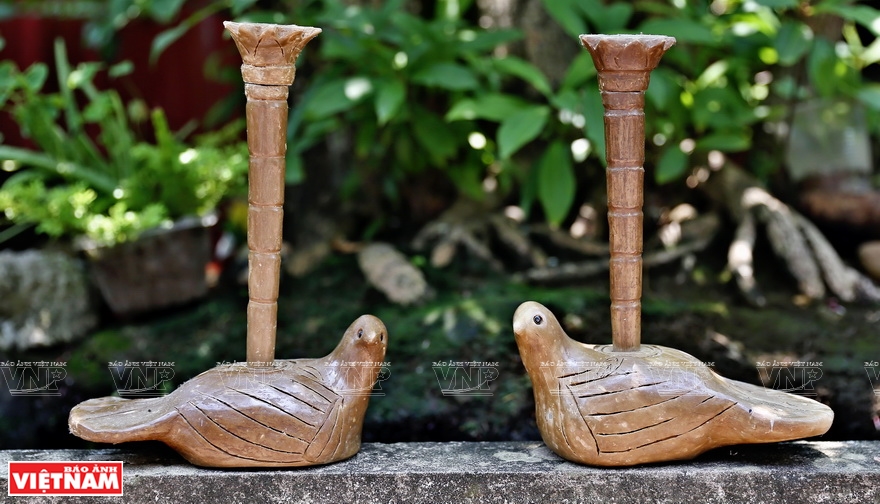
A pair of dove-shaped candle holders used for worship. Photo: Khanh Long
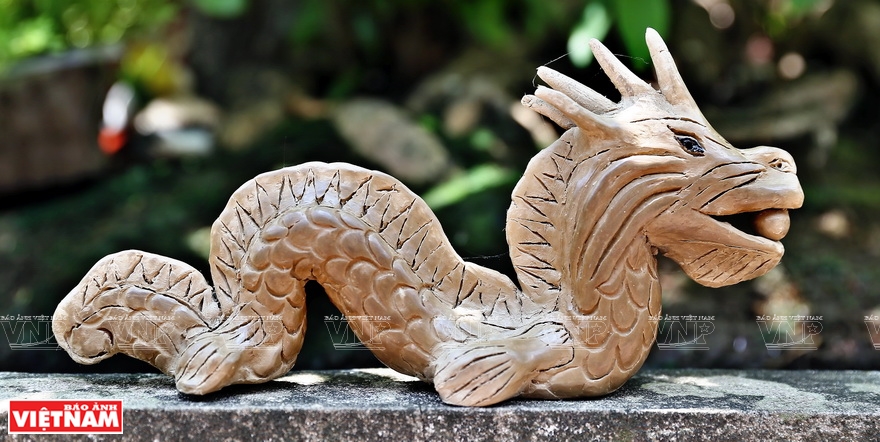
A dragon statue in the set of 12 zodiac animals. Photo: Khanh Long
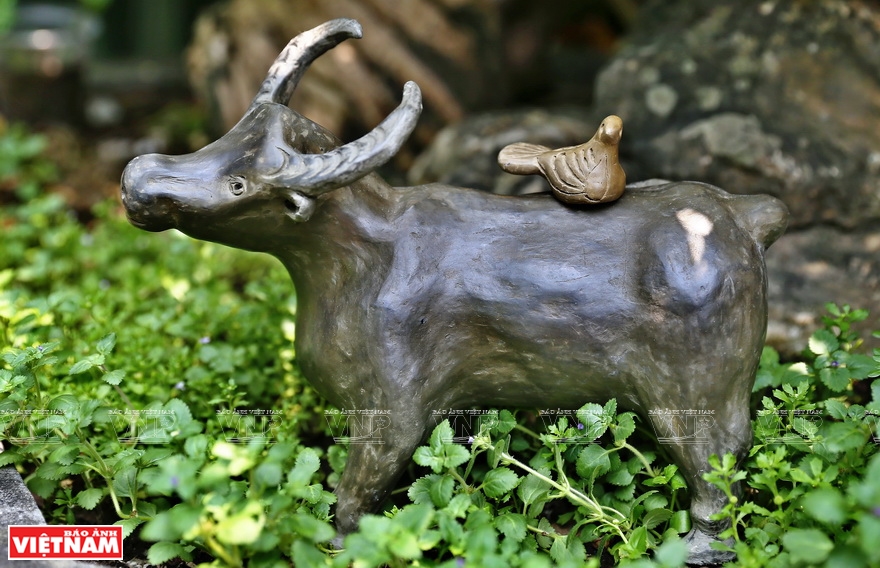
A bird on the back of a buffalo, a familiar image in every Vietnamese village . Photo: Khanh Long
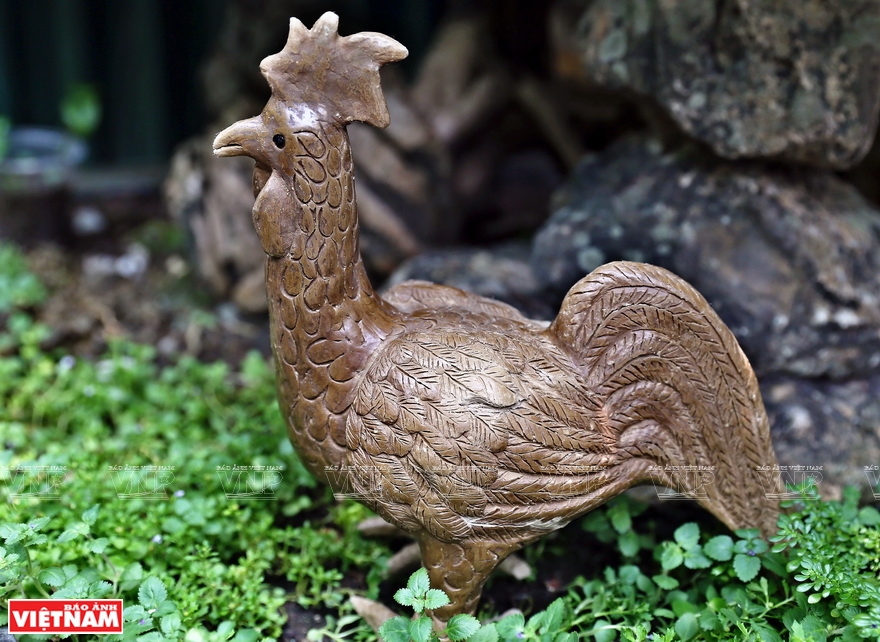
A sophisticatedly shaped rooster. Photo: Cong Dat
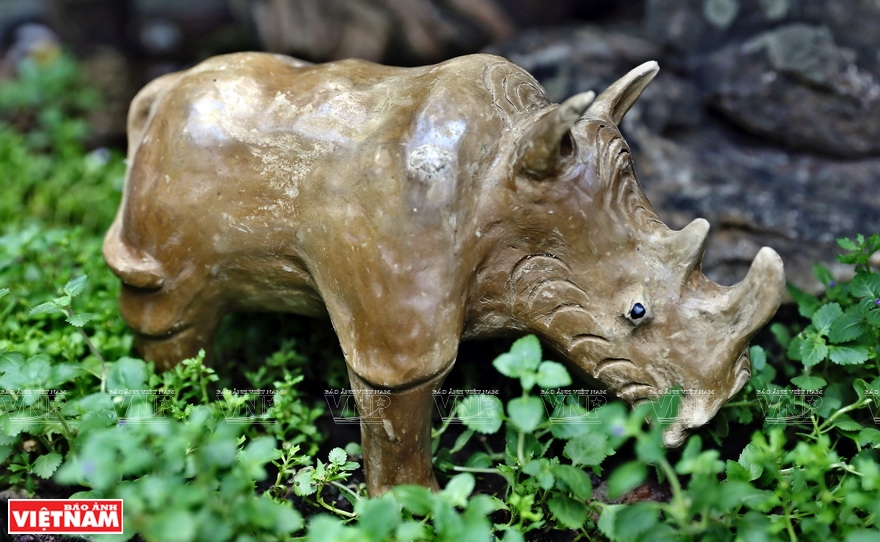
The statue of a rhino is shaped by hand. Photo: Cong Dat
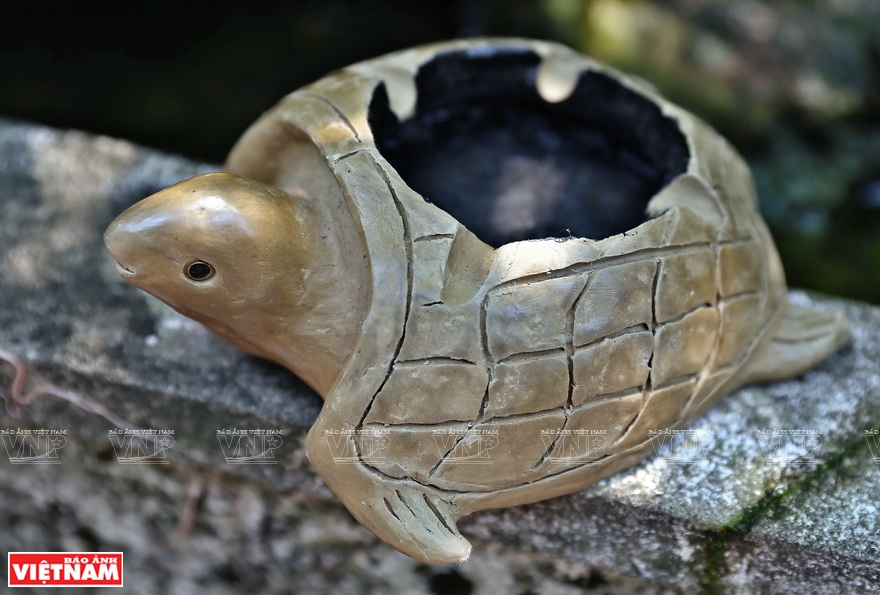
A beautiful turtle-shaped ashtray. Photo: Cong Dat
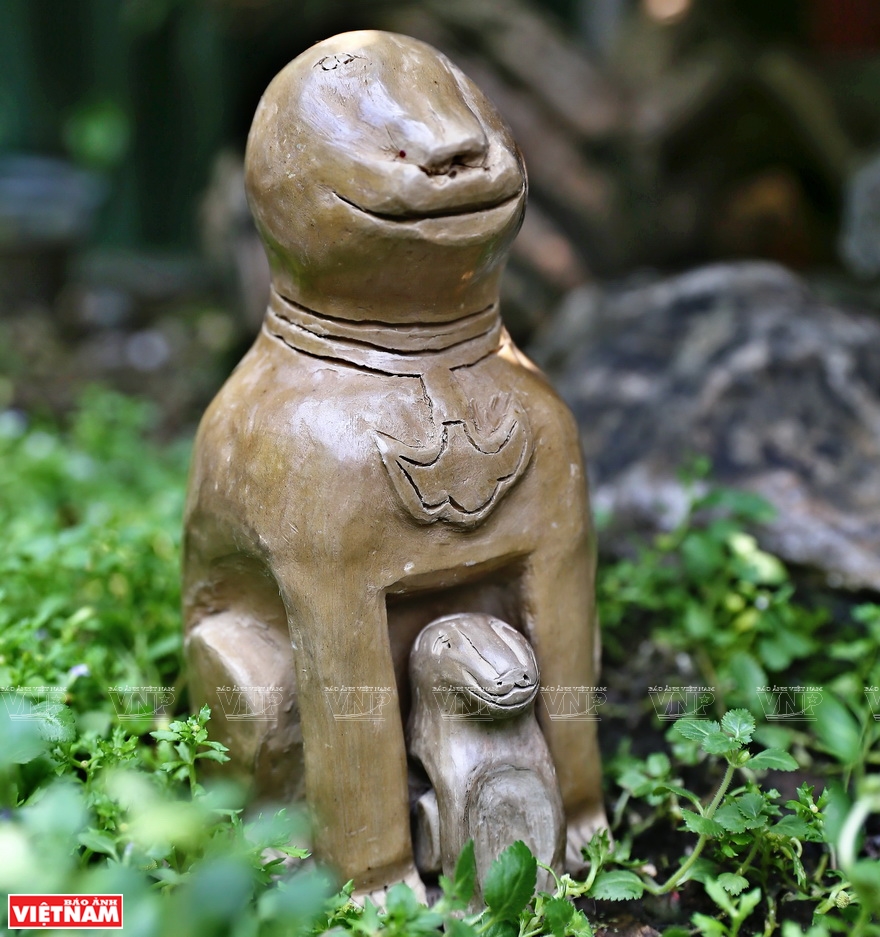
Cute dogs. Photo: Cong Dat
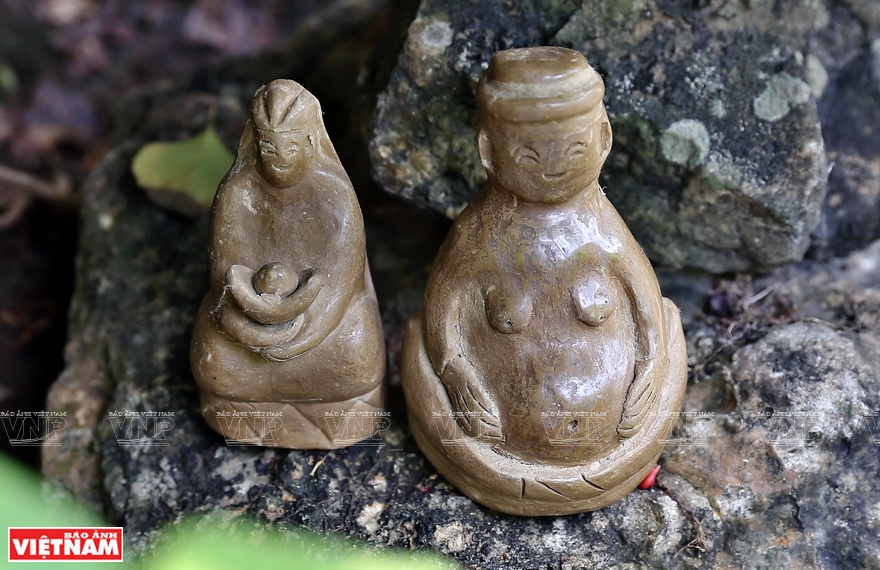 Clay statues created by artisan Phung Dinh Giap. Photo: Cong Dat Clay statues created by artisan Phung Dinh Giap. Photo: Cong Dat |
By Khanh Long & Cong Dat
Bài và ảnh: Khánh Long – Công Đạt